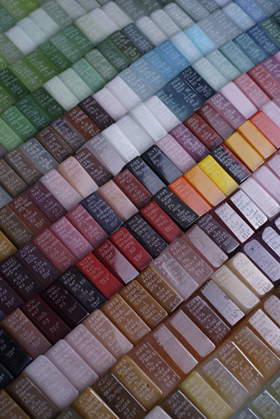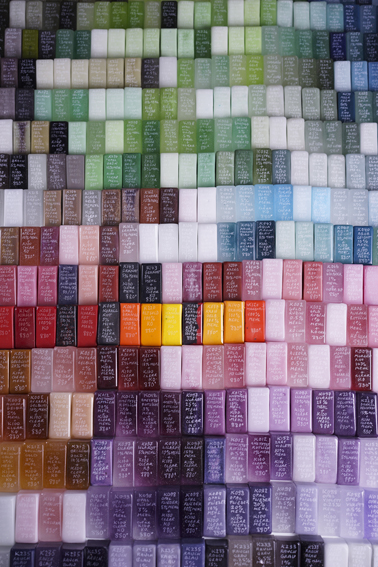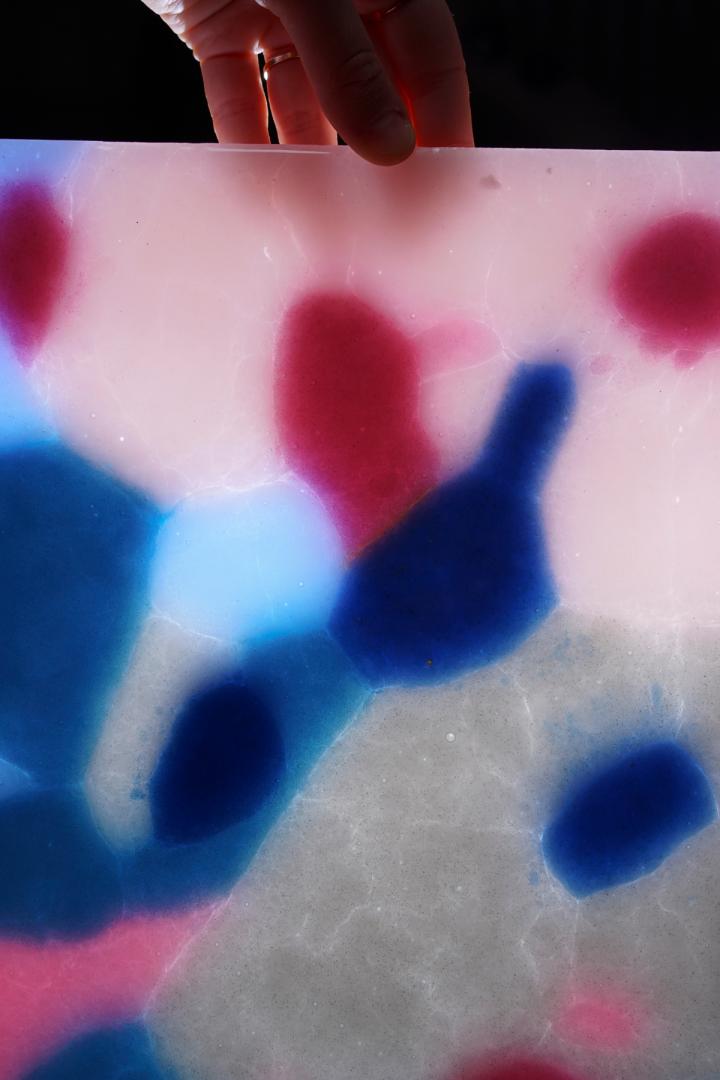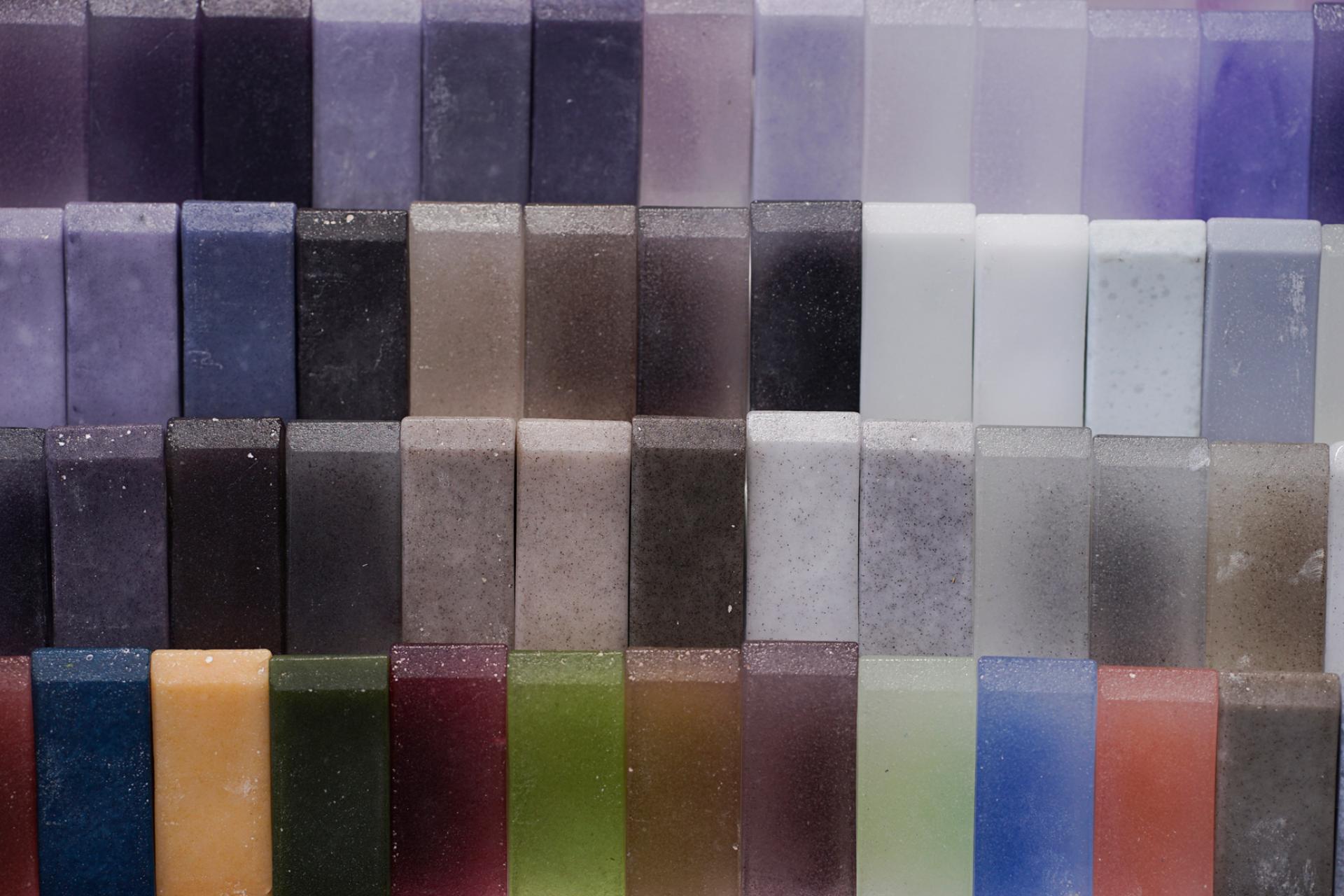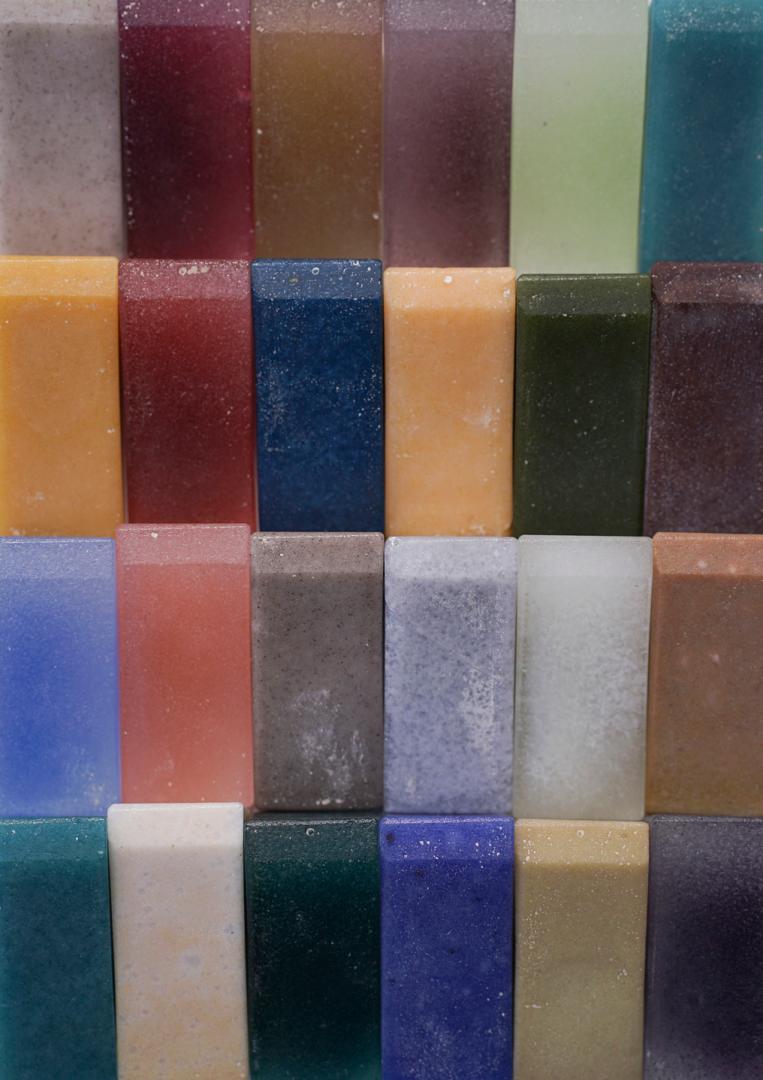Spectrum II
Basic information
Project Title
Full project title
Category
Project Description
Glass is everywhere ! While designers and architects often explore this material in term of shapes and structure, its chromatic potential has been underestimated. The Icelandic-German design studio "Studio Brynjar & Veronika" has developed with the Cirva (a French art centre) a unique glass colour archive. The palette encompasses more than 1000 samples of cast glass with idiosyncratic recipes. It gives the opportunity to "paint with glass" to design new environments made of light and colour.
Project Region
EU Programme or fund
Description of the project
Summary
The project Spectrum II is the result of a collaboration between German Icelandic design studio Studio B&V (Brynjar Sigurðarson and Veronika Sedlmair) and the highly skilled craftspeople of the Cirva (an art center based in Marseille, France). It explores new aesthetic possibilities of cast glass through an extensive glass colour archive.
Glass is everywhere: it is the material of architecture, of high technology and communication, of everyday life and ecology. We live with it and most of the time we do not even notice its presence. So far, architects and designers have been experimenting primarily with shapes and structures of glass, however little has been done concerning the potential of colour alone.
With Spectrum II the designers have opened a range of new glass colours, textures and material qualities that can transform the spaces we live in and the objects we use. This glass colour archive is made out of more than 1000 glass colour-samples developed and produced at the Cirva, using a glass casting technique referred to as « pâte de verre ». All the recipes have been carefully documented by the Cirva. The colour samples are based on new recipes derived from industrial colours that are accessible on the market to everyone. Different sizes of glass particles are mixed together, e.g. in a sugar like form, or as a fine powder, the glass is then fired in a kiln, for around 1-2 days at a temperatures ca. 900°C. The glass melts, and various colour and texture blends are achieved, depending on the mixtures used.
As it stands, the archive shows huge potential for development, particularly in the field of architectural glass. The immensely varied tonalities and material qualities achieved so far could be used to make large multicolored windows in one piece. Furthermore, this method yields visual effects that have not been explored in this format of glass work before, and allows the designer/maker to literally draw freely throug
Key objectives for sustainability
In a world where large scale industry, speed and artificial materials are causing harm to our environment, cast glass can be seen as a response to that. We believe that the slow design approach of Spectrum II is a sustainable way of thinking.
This project is based on a slow and sustainable approach to design and production. These glass pieces take a long time to make, but can last for millennia. Glass has proved its capacity to be an extremely long-lasting material. We know the artistic heritage of many civilizations thanks to glass artworks and commodities (as in ancient Mesopotamia, ancient Egypt, Roman and Islamic art) while many other objects from these times did not stand the test of time.
Whereas most of the post-consumer material strategies consist of recycling of biodegradability, glass is meant to last. It may be used for centuries without alteration. It is one of the only materials we know that has proven such strength for centuries. Spectrum II offers colour to travel through history.
In many ways, this project steps back in time and uses an almost forgotten skill in order to enrich our future. Pâte de verre, the technique which inspires this project, has its roots in the ancient world, in Mesopotamia. Spectrum II brings modern knowledge and techniques to this process in order to create something new and exciting in the world of design.
Furthermore, we believe that supporting craftsmanship and investing in unique aesthetics is a sustainable attitude. Care, attention to detail and time dedicated to extensive research ultimately permeate each object and give it genuine, long lasting value.
Key objectives for aesthetics and quality
Spectrum II embraces something as simple yet complex as colour. Colour in itself is a form of expression. Colour conveys emotions, it is non-verbal, but at the same time speaks a universal language that we all feel and understand. This archive is a precious tool for that enhancement of communication. In addition, as glass is a three dimensional material it does have depth - and each colour has its range of transparency and texture. This project is at the crossroad between colour, light and space, dimensions that shape our everyday life.
Our relation to glass today is in many ways through virtuality (screens etc.). The physical and aesthetic possibilities of glass outside of the digital world are underestimated. Spectrum II explores the visual qualities of glass in a subtle way.
The colour palette can be used to design a new generation of stained glass windows, glass panels which will create new environments and reshape spaces through light and colour. Studio Brynjar & Veronika is very interested in research relating to the healing powers and therapeutic qualities of colour, and in contributing to the well-being of the generations to come.
Key objectives for inclusion
First and foremost the archive is intended to be open source. Artists, designers, glass workers etc. can all access the information necessary in order to recreate the glass colours.
The work process has been a collaborative approach. Studio Brynjar & Veronika is interested in working with different fields of practice, from musicians and flute makers, to archaeologists or specialists in different materials. Through dialogue and exploration they come across new ideas that they would not have discovered otherwise.
This was the case with the Cirva. In many ways the collaboration between the glass specialists and Studio Bynjar & Veronika lies at the heart of the project and its innovation. Spectrum II is a cross disciplinary project based on knowledge and experience as well as creativity and design thinking.
The experimental and explorative approach of the Cirva allows designers to work without commercial pressure or a predefined outcome. This is how the colour research could take place over the course two years. This valuable setting helped the designers develop a new approach to glass casting.
Results in relation to category
Spectrum II is a tool dedicated to a specific material. Its application range is very wide. Creating such a comprehensive archive has been a real challenge. Glass is a very unpredictable material and the creation of each sample demanded time, care and a high level of craftsmanship.
Our research is not focused on fixed-shapes but on colours : it is very open to any kind of composition. The colour-archive is based on recipes made out of industrial glass colours, it is very accessible. It can be used to design objects as well as architectural elements. On one hand, this project is interesting to the glass making community, on the other hand it is interesting to artists, architects and designers.
Glass is a sustainable material, we believe that opening new aesthetic possibilities of the material is a way to enhance its use. As this archive will eventually be open for the public to access, it is not an end in itself, it is an invitation to play with glass.
Spectrum is currently evolving in a new direction, using colours from the archive to explore ways of painting with glass. The « drawing process » that is being developed is one of the many options opened by this archive.
How Citizens benefit
The Cirva is a non-profit association, recognized for general interest. Since its creation, it has benefited from the support of the Ministry of Culture / regional directorate of cultural affairs Provence-Alpes-Côte d’Azur, the City of Marseille, the Sud Paca regional council and the Bouches-du-Rhône departmental council.
The Cirva and Studio B&V would like to open this archive. An important amount of work will be required in order to digitize it and to create a website which everybody can access. The European Bauhaus Prize could help us to broadcast this precious knowledge and to spread the hidden yet undiscovered beauty of glass.
Innovative character
This extensive archive of new colours and textures for glass is unique in the world of glass. Colours and textures that have been created in this project have, to the best of our knowledge, not been made before. In this way, this project brings something never seen before to the glass casting.
The Cirva is a research art centre, it has always been an outpost in the world of contemporary art and design. It is a unique model worldwide : thanks to public subsidies, it is open to challenges, it develops long-term relationships with artists and designers. This model is innovative in itself.
The Cirva always collaborates with groundbreaking artists such as Studio Brynjar & Veronika, an Icelandic-German studio working in the field of art and design. Since 2011 they have been working on various projects ranging from The Silent Village furniture collection for Galerie Kreo, Paris, to a new instrument, a Circle Flute, supported by Lafayette Anticipations, Paris, and played in Björks recent Cornucopia concert tour. In recent years, Studio B&V have worked on projects for the crystal manufacturer Swarovski and their Glacier Candles are produced by the Spanish design editor PCM.
The 1000 colour shades encompassed in the archive are idiosyncratic. Spectrum II is a milestone in the history of pâte de verre : it updates an ancient technique and craftsmanship from the point of view of young designers. Such a long collaboration between artists and craftsmen is quite unique. The working process that has unfolded over the course of this project is innovative too.

